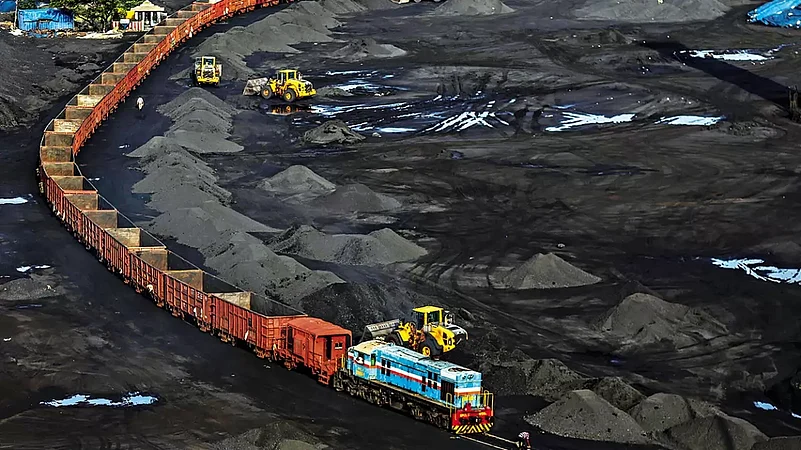A strong pushback by some countries, including India, led to the agreement to “transition away from fossil fuels”, but without a mention of their “phase-out” at the 2023 United Nations Climate Change Conference in Dubai. Contesting the proposal which stipulated that no new coal-fired power plants can be commissioned without an in-built carbon capture and storage facility has come as a breather for India.
The discussion around fossil fuels was the most hotly-contested issue, dividing experts and countries, but the consensus was that “COP28 marks the beginning of the end of the fossil fuel era”. After the conference, UN Secretary-General Antonio Guterres, in a post on X, said: “Whether you like it or not, fossil fuel phase-out is inevitable.” He specified that he was addressing “those who opposed a clear reference to phase out of fossil fuels” during the summit. “Let’s hope it (phase out) doesn’t come too late,” Guterres wrote.
There were two main reasons why the phrasing ‘phasing-out of fossil fuel’ did not find a place in the adopted text. According to an Indian delegate who was part of the negotiations, the oil and gas lobby vehemently protested the idea. The coal-dependent developing countries also opposed it because it would be suicidal for their economies as long as they do not get the necessary funds and transfer of technology from the developed countries. “But the developed countries weren’t willing to make that commitment,” said the delegate.
Though the phrasing has come as a breather, India’s window to transition away from coal is narrowing, even as the country is set on a coal expansion path for at least another decade.
India has “the target of a minimum 80,000 MW (or 80 GW) of coal-based capacity addition by 2031-2032,” Union Power and New and Renewable Energy Minister R K Singh informed the Parliament on December 15, two days after COP28. This means about a 40 per cent increase over the current coal-based thermal power installed capacity of 207 GW.
In the same period, India plans to add 375 GW of renewable energy capacity over about 133 GW of existing capacity. Getting funding for the expansion of renewable won’t be easy. Multiple reports have shown India is not getting the finance necessary for the kind of expansion the country is aiming for.
“Energy security of the country cannot be achieved by renewable sources of energy alone,” said Singh on December 15, adding that the dependence on coal-based generation is likely to continue till cost-effective energy storage solutions are available. However, a report published in December by the Delhi-based Centre for Financial Accountability (CFA) and Climate Trends shows that for the second year in a row, no coal power plant has received project finance lending in 2022.
Joe Athialy, executive director, CFA, points out that the cost of renewable energy with a storage system is currently comparable and cheaper than new coal plant construction, irrespective of the location. Coal power plants are losing out to renewable energy on per unit cost of electricity. “Financial institutions are reluctant to fund coal projects, be it power plant construction or coal mining, knowing well that the global outlook on coal remains heavily in the negative,” Athialy says.
That the situation did not improve in 2023 was evident when, in October, the coal ministry organised a meeting between 91 new coal block allottees and banks and financial institutions, urging the banks to finance new coal projects. The coal ministry even requested the Department of Financial Services to consider classifying the coal sector under the ‘infrastructure sector’ to help them get finance.
For India, coal is not only a matter of energy security but also a source of livelihood. So, while transitioning to renewable energy is inevitable, the phase-out has to be methodical.
“The phase-out of fossil fuels will only be possible with the right financing package for poor and vulnerable nations. The text does not even set out the need to agree on a definition of climate finance or take any steps to improve the transparency of financial flows,” says Friederike Roder, the vice president of Global Citizen, a US-headquartered non-profit. Despite a strong start with the creation of the Loss and Damage fund, in the end, the financing package falls short of expectations and lacks any reality, she says. “Reiterating old promises, like doubling funding for adaptation by 2025, without requesting implementation plans is no progress,” adds Roder.
To draw greater attention to the cause of adaptation and resilience building was one of the major issues for developing countries. However, the draft text of the Global Goal on Adaptation has upset civil society.
According to Teresa Anderson, global lead on climate justice at the global non-profit Action Aid, the text “has only soft language that politely encourages developed countries to play their part, but doesn’t go far enough in actually requiring wealthy countries to provide the finance needed to make the adaptation goal a reality on the ground.”
The final text also expressed “concern” over the pre-2020 gaps in both mitigation ambition and implementation by the developed countries and noted their failure to achieve the emission reduction targets set for them by the Intergovernmental Panel on Climate Change (IPCC).
The balance, nevertheless, remained tilted towards the rich. Ulka Kelkar, executive director of climate at the World Resources Institute’s India chapter, says that though the text recognises that the gap in adaptation finance is “widening” and that doubling the current low levels of adaptation finance will be insufficient, it also “exonerates the developed countries” from making up the finance gap so far.
According to the UN Environment Programme’s (UNEP) Emissions Gap Report (EGR) published in November, globally, the 10 per cent of the population with the highest income accounted for nearly half (48 per cent) of emissions. Two-thirds of this group lives in developed countries. The bottom 50 per cent contributed only 12 per cent of the total emissions. It is the developed countries that are supposed to mobilise the required finances. Hence, the outcome has upset most of the developing and least developed countries.
Despite pressure from scientists, climate activists, civil society, and the small countries most vulnerable to climatic changes, the text was a result of several compromises due to conflicting interests between countries at different stages of development. However, there have been several outcomes that experts and civil society members welcomed and even termed historic. The most important was the first explicit mention of fossil fuel instead of singling out coal.
COP28 marks the beginning of the end of the fossil fuel era, says Linda Kalcher, executive director at the pan-European think-tank, Strategic Perspectives. “This outcome must be harnessed by governments and markets,” she adds. However, with the kind of anti-fossil fuel atmosphere that COP28 has created, dealing with the immediate coal expansion and subsequent phase-down in a “just, orderly and equitable manner”—as COP28 calls for—is poised to be one of India’s biggest challenges in the coming decades.
(This appeared in the print as 'The Narrowing Window')
















